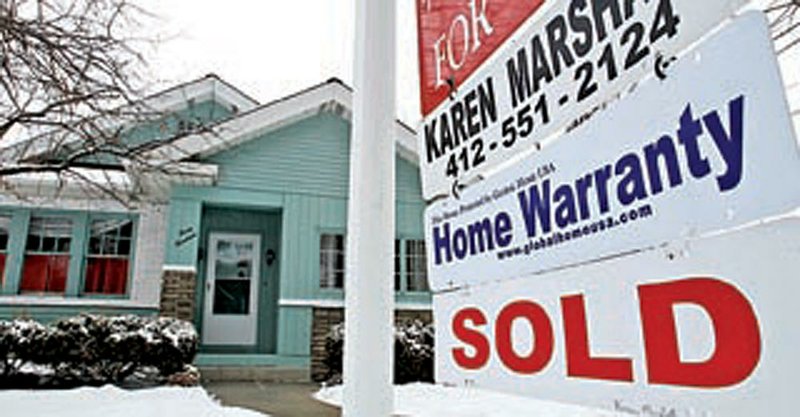LITTLE ROCK — The average rate on the 30-year mortgage topped 5 percent this week for the first time since April.
Economists said higher rates could further hamper the struggling housing market ahead of the spring’s prime homebuying season.
“It will have a slight dampening impact on homebuying,” said Paul Dales, senior U.S. economist for Capital Economics Ltd. in Toronto. “Mortgage rates around 5 percent are still very low by historical standards, but these increases do seem to be putting people off.”
Freddie Mac said Thursday that the average rate rose to 5.05 percent from 4.81 percent last week. It hit a 40-year low of 4.17 percent in November. The average rate on the 15-year home loan, a popular refinance option, increased to 4.29 percent from 4.08 percent. It reached 3.57 percent in November, the lowest level on records starting in 1991.
Mortgage applications fell for the second time in three weeks, a Mortgage Bankers Association index showed Wednesday. The group’s gauge of purchases decreased 1.4 percent in the week that ended Feb. 4, and its refinancing measure dropped 7.7 percent.
Mortgage rates are following the yields on the 10-year Treasury note, which are spiking on fears of higher inflation. Investors have been demanding higher Treasury yields since the Federal Reserve began its $600 billion bond-buying program to help the economy.
Record-high foreclosures, job concerns and expectations that home prices will fall further have sidelined many potential homebuyers. Rising mortgage rates could deter more people from buying, although rates are still extremely low by historical standards.
“It doesn’t help. Any increase in mortgage rates takes away buying power and dilutes the incentive to refinance,” said Greg McBride, a senior financial analyst with Bankrate.com.
The payment difference between the 5.05 percent rate and the historically low rate in November on a $200,000 loan is less than $100 a month, not enough to price a buyer out of a market, McBride said. There also are plenty of buyers paying cash.
Still, if rates continue to spike, that will chill any recovery in housing, said Patrick Newport, U.S. economist at IHS Global Insight.
“Six percent would do serious damage if it happened in a very short period of time,” Newport said.
Current mortgage rates are in a “neutral zone” where purchasers are neither pushed to buy nor discouraged from the market, said Tom Tzitzouris, head of the fixed-income department at Strategas Research Partners in New York.
“If you get another uptick again next week, you may see some movement,” said Tzitzouris.
In the last three months of last year, more people turned out to buy previously occupied homes in 49 states, according to a report Wednesday from the National Association of Realtors. Prices also improved in more than half of the metropolitan areas the group surveys. That offered hope for a nascent recovery, even after 2010 was the worst year for sales in 13 years.
To calculate average mortgage rates, Freddie Mac, the Federal Home Loan MortgageCorp., collects rates from lenders across the country Monday through Wednesday of each week. Rates often fluctuate significantly, even within a single day.
The average rate on a five year adjustable-rate mortgage rose to 3.92 percent from 3.69 percent. The five-year hit 3.25 percent last month, the lowest rate on records dating back to January 2005.
The average rate on one year adjustable-rate home loans increased to 3.35 percent from 3.26 percent.
The rates do not include add-on fees, known as points. One point is equal to 1 percent of the total loan amount. The average fee for the 30-year and 15-year loan in Freddie Mac’s survey was 0.7 point. The average fee for the five year and 1-year adjustable was 0.6 point.
Information for this article was contributed by Janna Herron of The Associated Press and by Rebecca McClay and Kathleen M. Howley of Bloomberg News.
Business, Pages 27 on 02/11/2011
